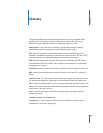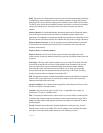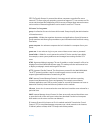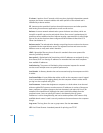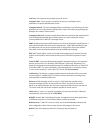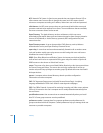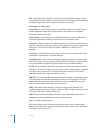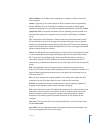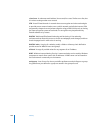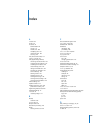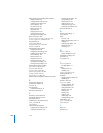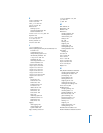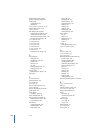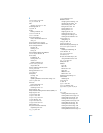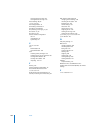
Glossary 297
static IP address An IP address that’s assigned to a computer or device once and is
never changed.
subnet A grouping on the same network of client computers that are organized by
location (different floors of a building, for example) or by usage (all eighth-grade
students, for example). The use of subnets simplifies administration. See also IP subnet.
system-less client A computer that doesn’t have an operating system installed on its
local hard disk. System-less computers can start up from a disk image on a NetBoot
server.
TCP Transmission Control Protocol. A method used along with the Internet Protocol
(IP) to send data in the form of message units between computers over the Internet.
IP takes care of handling the actual delivery of the data, and TCP takes care of keeping
track of the individual units of data (called packets) into which a message is divided for
efficient routing through the Internet.
Tomcat The official reference implementation for Java Servlet 2.2 and JavaServer Pages
1.1, two complementary technologies developed under the Java Community Process.
TTL Time-to-live. The specified length of time that DNS information is stored in a
cache. When a domain name-IP address pair has been cached longer than the TTL
value, the entry is deleted from the name server’s cache (but not from the primary DNS
server).
UDP User Datagram Protocol. A communications method that uses the Internet
Protocol (IP) to send a data unit (called a datagram) from one computer to another in a
network. Network applications that have very small data units to exchange may use
UDP rather than TCP.
UID User ID. A number that uniquely identifies a user within a file system. Mac OS X
computers use the UID to keep track of a user’s folder and file ownership.
Unicode A standard that assigns a unique number to every character, regardless of
language or the operating system used to display the language.
URL Uniform Resource Locator. The address of a computer, file, or resource that can be
accessed on a local network or the Internet. The URL is made up of the name of the
protocol needed to access the resource, a domain name that identifies a specific
computer on the Internet, and a hierarchical description of a file location on the
computer.
user name The long name for a user, sometimes referred to as the user’s “real” name.
See also short name.
user profile The set of personal desktop and preference settings that Windows saves
for a user and applies each time the user logs in.



